
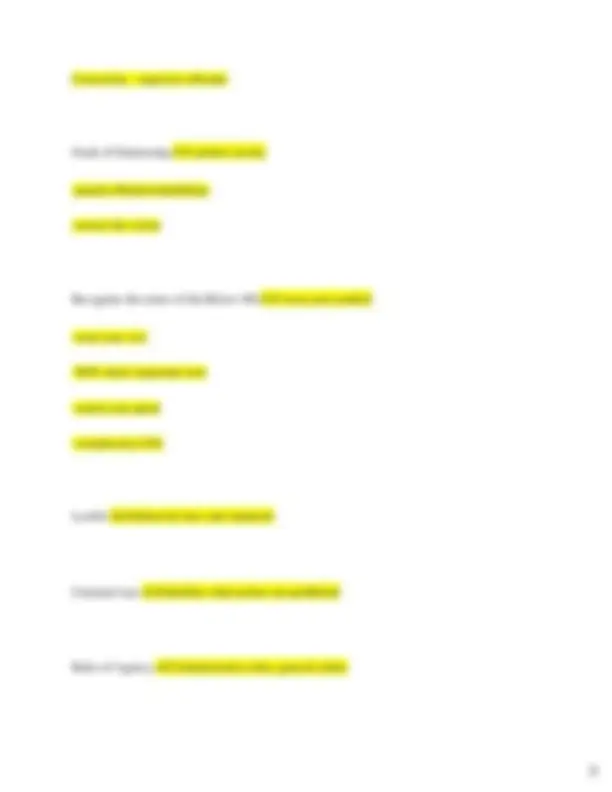
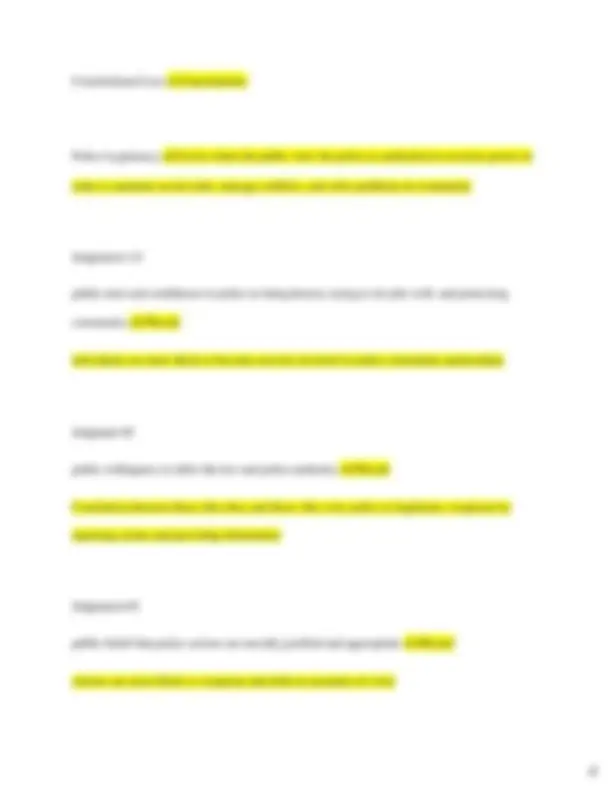






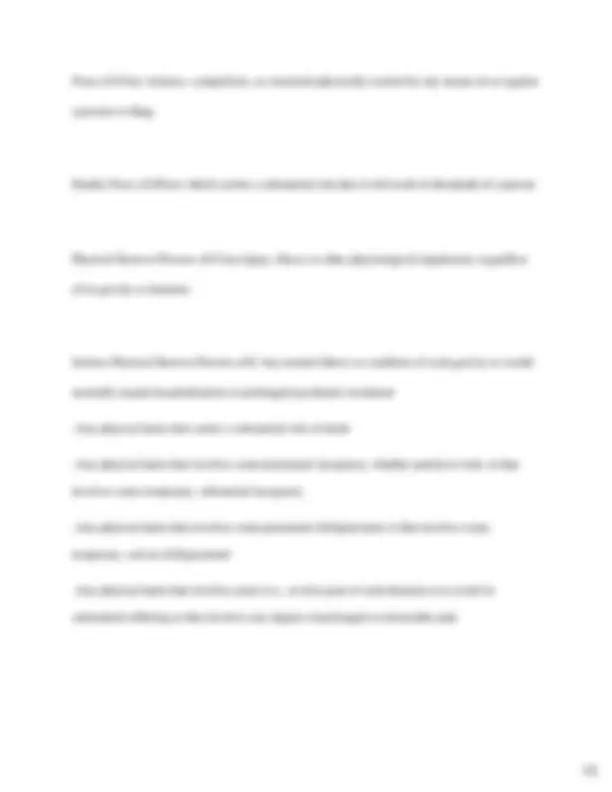












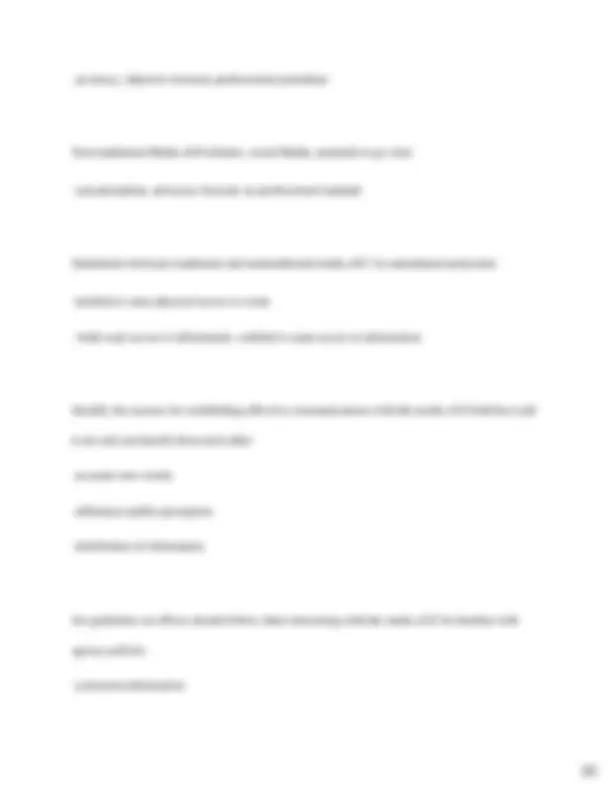
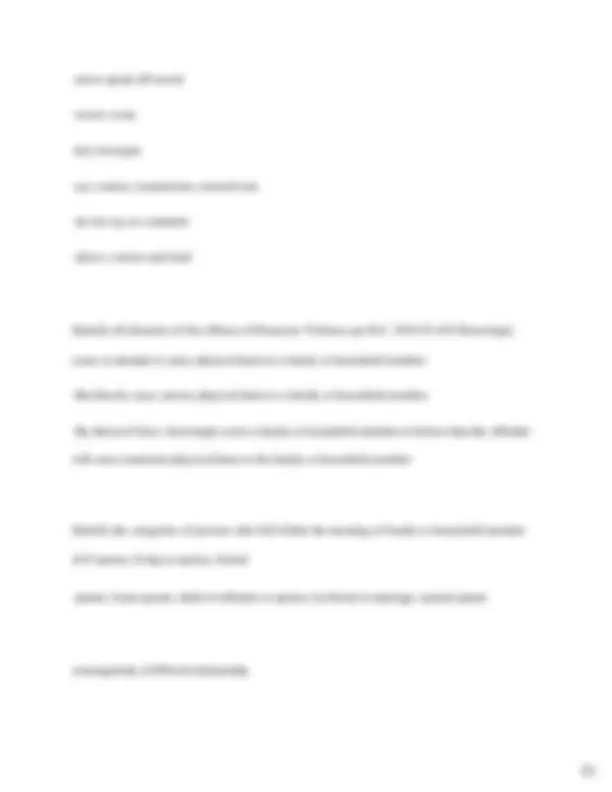
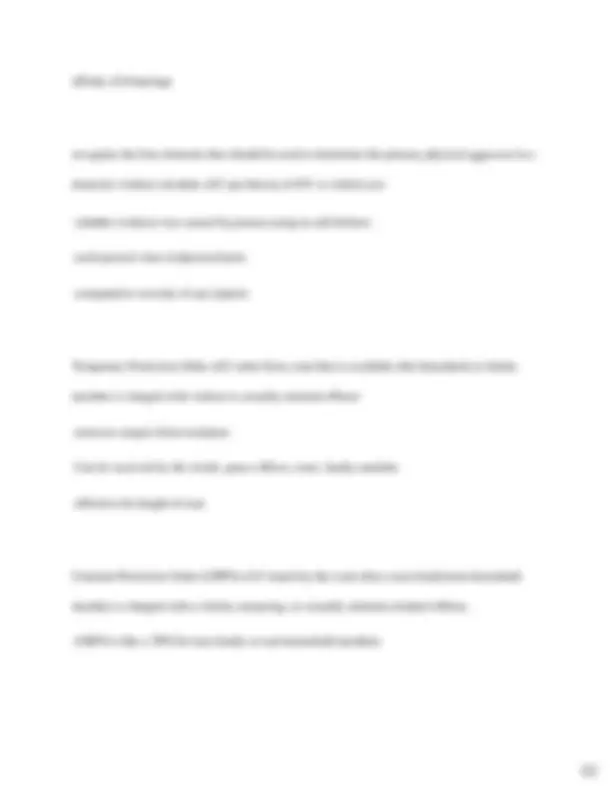






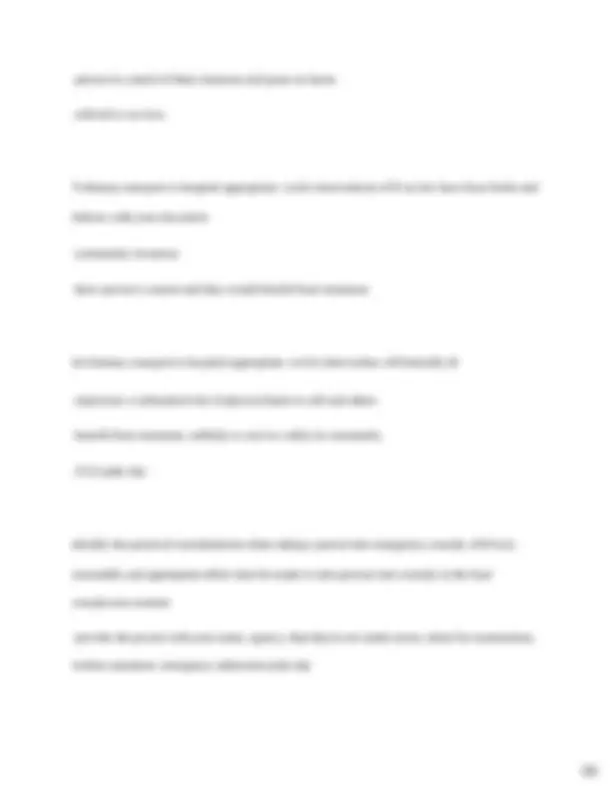


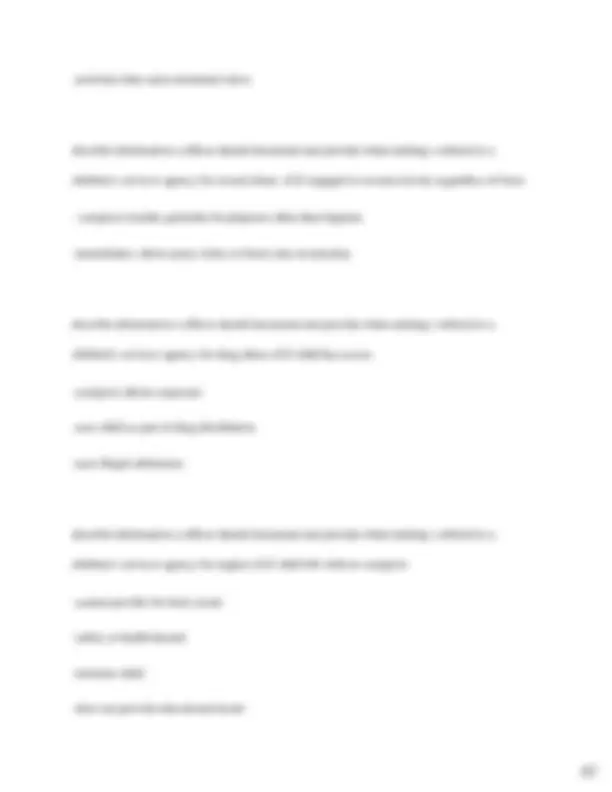


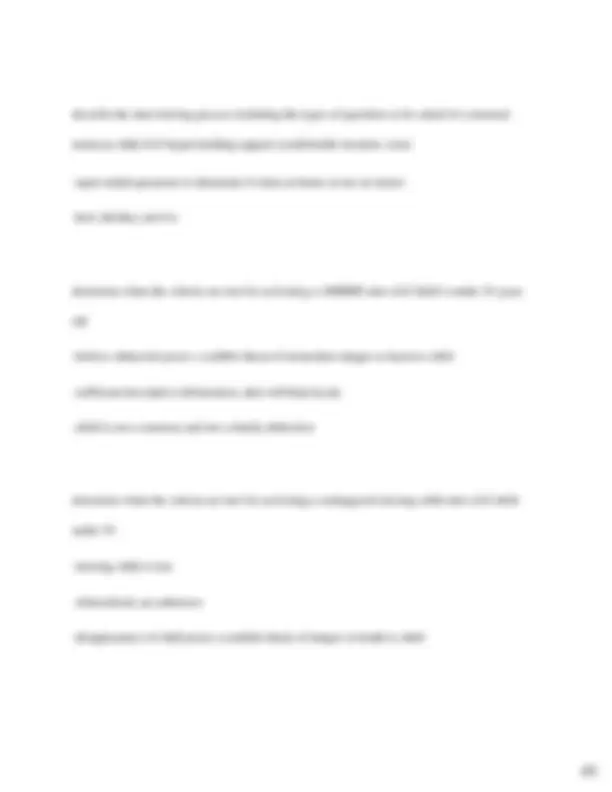




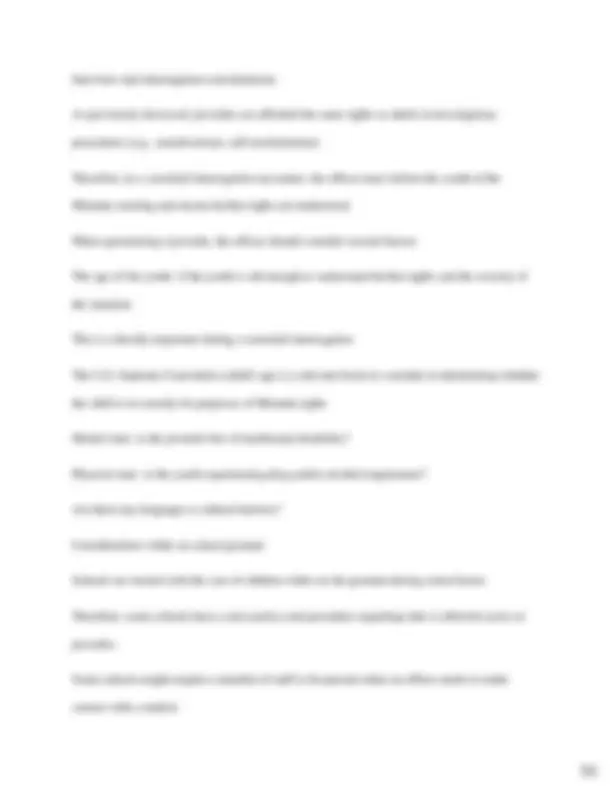
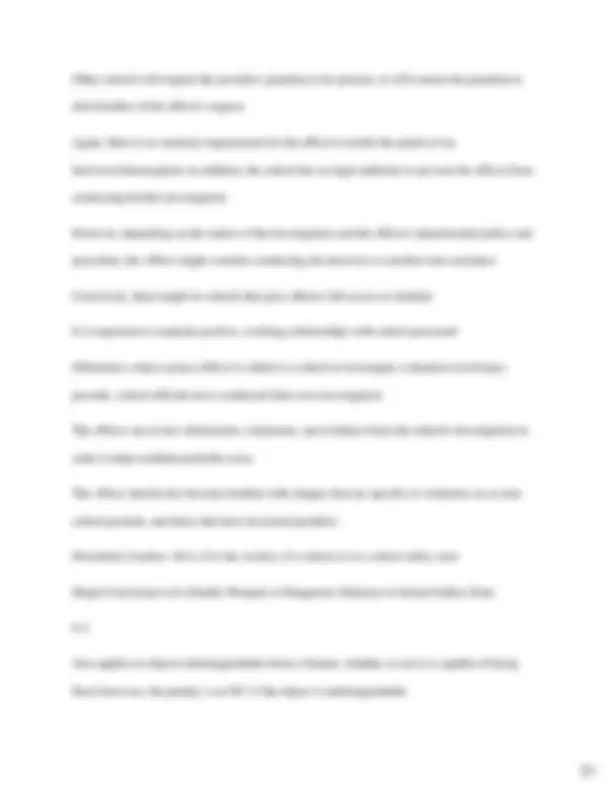


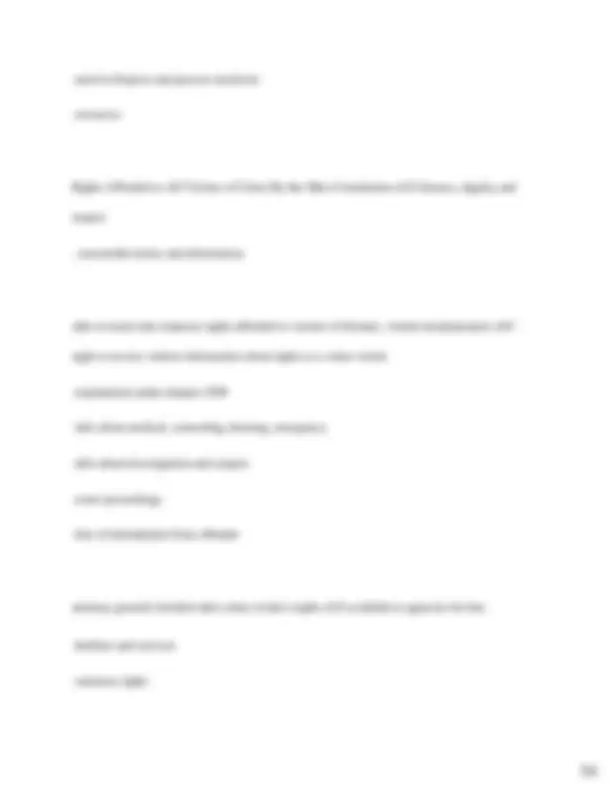

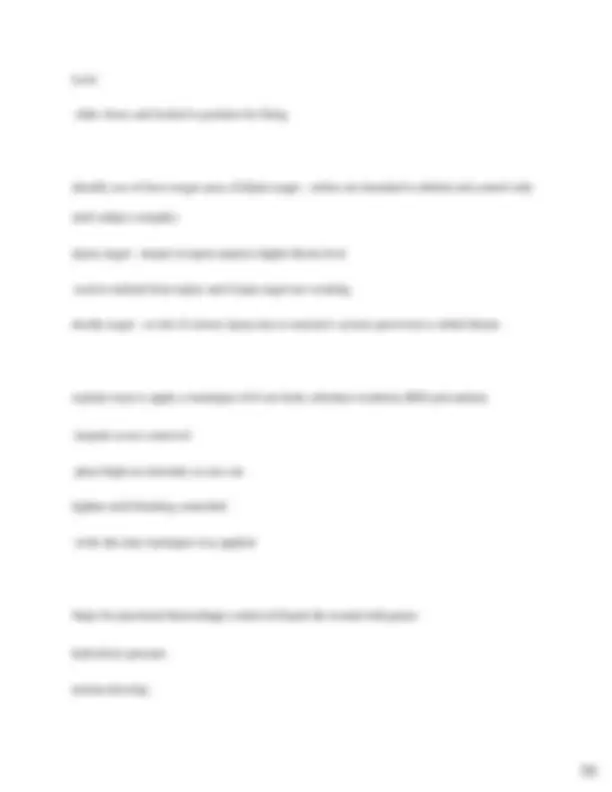











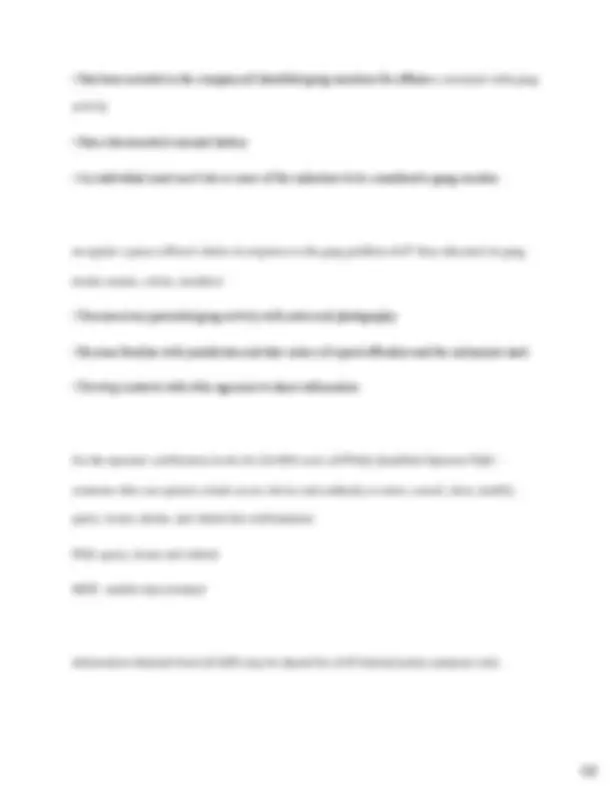











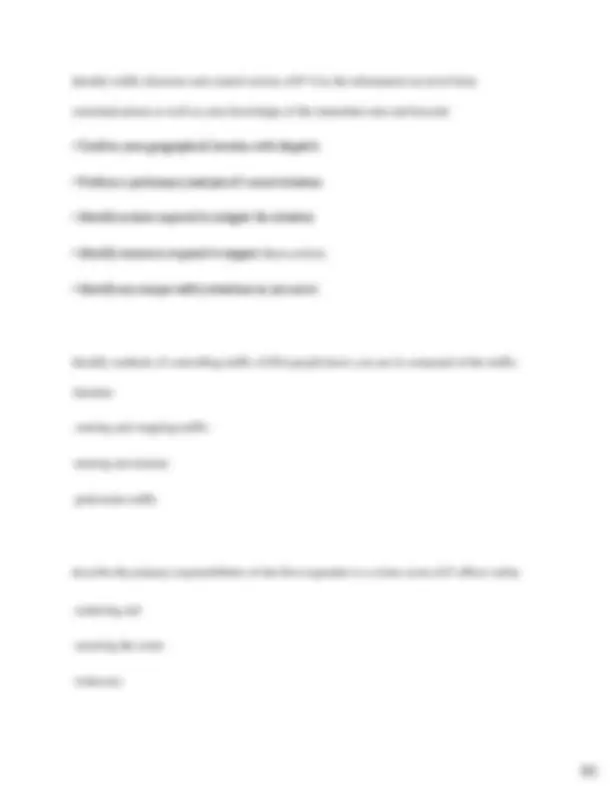

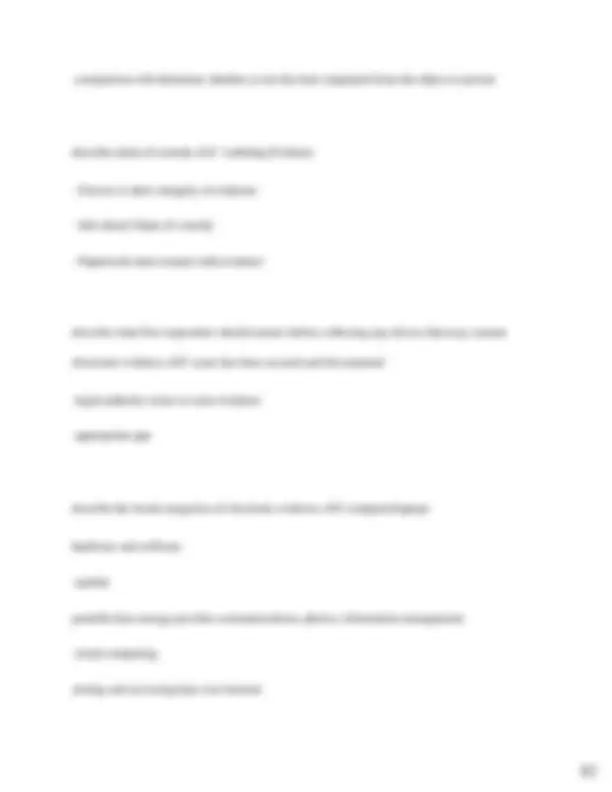










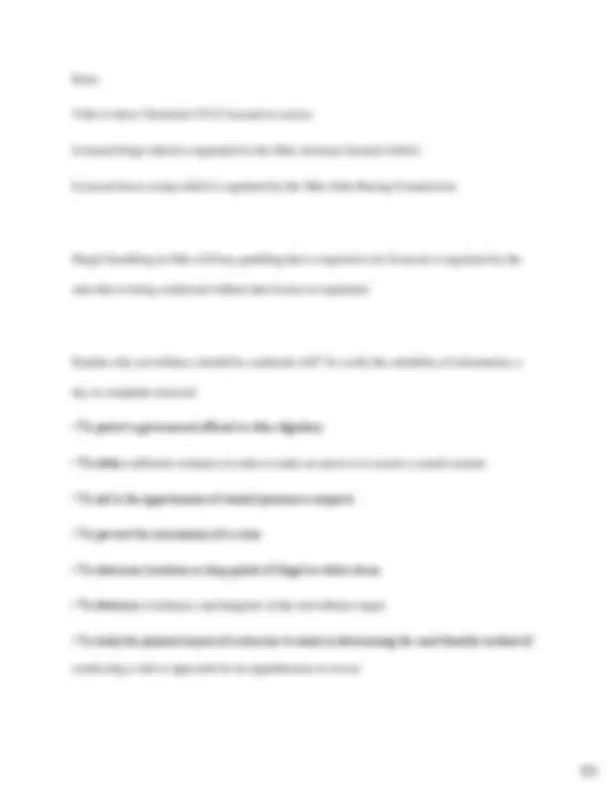




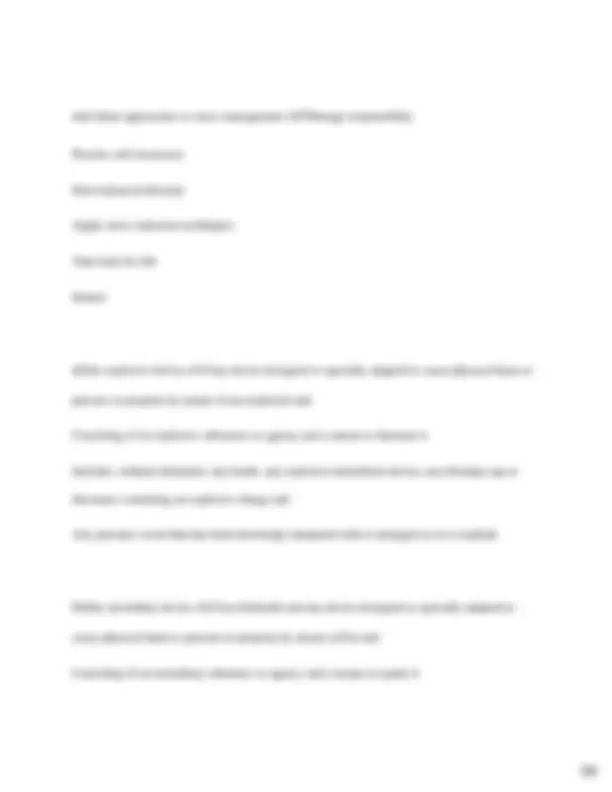

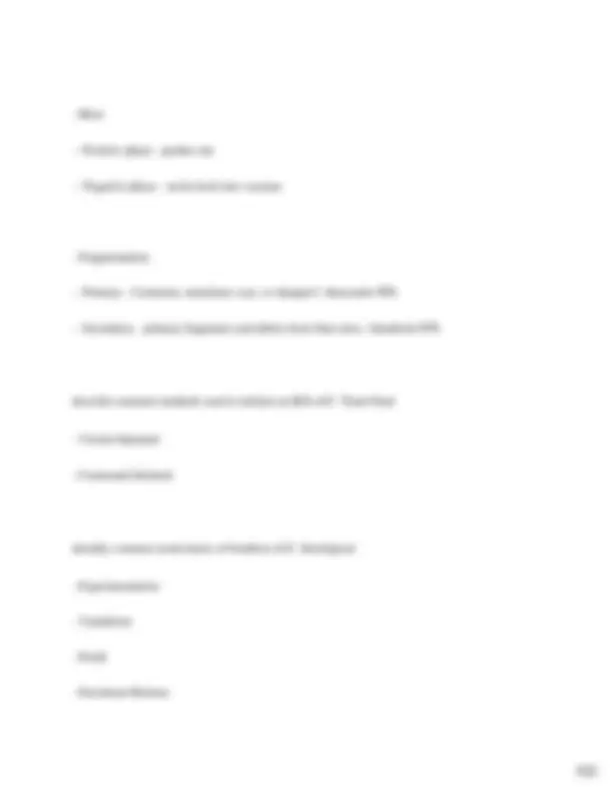


Study with the several resources on Docsity

Earn points by helping other students or get them with a premium plan


Prepare for your exams
Study with the several resources on Docsity

Earn points to download
Earn points by helping other students or get them with a premium plan
Community
Ask the community for help and clear up your study doubts
Discover the best universities in your country according to Docsity users
Free resources
Download our free guides on studying techniques, anxiety management strategies, and thesis advice from Docsity tutors
OPOTA Exam Questions and Answers 100% Pass Explain the relationship between a SPO and a test question ✔✔A test question must respond directly to an SPO and every SPO may be the basis of a test question Explain the ultimate reason for law enforcement training ✔✔To be able to protect the life and property of yourself and the public List a peace officer's main goals ✔✔- Enforce the laws
Typology: Exams
1 / 124

This page cannot be seen from the preview
Don't miss anything!





























































































Explain the relationship between a SPO and a test question ✔✔A test question must respond directly to an SPO and every SPO may be the basis of a test question
Explain the ultimate reason for law enforcement training ✔✔To be able to protect the life and property of yourself and the public
List a peace officer's main goals ✔✔- Enforce the laws
Explain items to consider when exercising discretion ✔✔- Use sound judgment to determine which laws are to be formally enforced
Explain the factors necessary for the commission of crime ✔✔Desire - the motivation behind criminal behavior
Victim - potential target, unaware of surroundings
Opportunity - crime prevention strategies
State the core concepts of community policing ✔✔-partnership between community and police
Considerations for off duty situations ✔✔Behavior - social media, uphold ethics
Situational Awareness- be alert, pre plan, off duty weapon policy, be a good witness
State the purpose of Bill of Rights ✔✔protect a individual's freedoms
Describe the major components of the criminal justice system ✔✔Law Enforcement
Courts - hold fair & impartial trials, guilt or innocence, Impose sentences
Constitutional Law ✔✔amendments
Police Legitimacy ✔✔exists when the public view the police as authorized to exercise power in order to maintain social order, manage conflicts, and solve problems in community
Judgement 1/
public trust and confidence in police as being honest, trying to do jobs well, and protecting community ✔✔Result
individuals are more likely to become actively involved in police community partnerships
Judgment #
public willingness to defer the law and police authority ✔✔Result
Correlation between those who obey and those who view police as legitimate, cooperate by reporting crimes and providing information
Judgement #
public belief that police actions are morally justified and appropriate ✔✔Result
citizens are more likely to cooperate and defer in moments of crisis
circumstances when filming police officers is permissible ✔✔-one party consents
-as long as it does not interfere with officers carrying out their duties
Race ✔✔modern concept used to classify people by similar, observable physical characteristics
Genetically influenced traits ✔✔Skin color, hair, eye shape, blood type, intelligence
connection between in / out groups, and police legitimacy ✔✔some people interpret their encounters with police in terms of their group's societal position rather than immediate circumstances of the police contact
Types of Racism ✔✔individual, interpersonal, institutional, structural
Individual Racism ✔✔internalized, unexpressed biases and prejudices based on race
Interpersonal Racism ✔✔occurs between individuals, public expressions of racial prejudice and hate
Criminal profiling ✔✔Based on observed behaviors and characteristics
Two types of Bias ✔✔explicit and implicit
Explicit Bias ✔✔conscious preference for a social category
Implicit bias ✔✔preference for a social category based on stereotypes that we hold and tend to develop in early life
Two modes of thinking ✔✔automatic (system 1)
deliberative (system 2)
System 1 thinking ✔✔automatic, effortless, unconscious, very fast
System 2 thinking ✔✔Conscious, controlled, effortful, slower
practical purpose ✔✔simplifies tasks which most adults do without having to systematically think about each step
protection mechanism ✔✔we evaluate everything we see to determine if threatening or not
strategies to counter implicit biases ✔✔-Guarding against influence in decision making
-awareness
-know when you're susceptible ( in complete info, cognitive load, fatigue)
-slow down thinking
-empathetic
-effort (intention, attention, time)
Two-pronged Approach to Procedural Justice ✔✔person based approach
community based model
person based approach ✔✔emphasizes the importance of face to face interactions between officer and a citizen
Community based model ✔✔ultimate goal is to achieve police legitimacy through entire society
Denial of responsibility ✔✔acted improperly because no other options
Denial of injury ✔✔argue that action did not hurt anyone so no ethical misconduct
Social Weighting ✔✔makes comparisons to justify unethical misconduct
moral justification ✔✔argues that it's necessary to break rules for the greater good
Continuum of Compromise ✔✔-being exposed on a regular basis to "special authority" and at the same time being exposed on a daily basis to that element of society that operates without values, combines to severely challenge an officer's core values system
acts of omission ✔✔officer rationalize and justify not doing things they are responsible
Acts of commission ✔✔administrative violations
acts of commission ✔✔-criminal
-theft
Rationalization ✔✔nobody is being hurt, except for bad guys who deserve it anyway
Steps in Decsion Making Model ✔✔#1- Define problem
#2- Identify alternative solutions
#3- Evaluate alternatives
#4- make the decision
#5- implement the decision
#6- evaluate the decision
PLUS filters ✔✔Policies
Legal
Universal
Self
-Let victims and witnesses talk through the event before you start recording notes
-Ask clarifying follow-up questions
-Be as complete as possible
-Consider the use of electronic data device or template
-Do not record personal information in your notebook
essential questions answered in a report ✔✔Who, what, where, when, how, why
Requirements of a well written report ✔✔complete, factual, objective, accurate
explain crime ✔✔An act that the law makes punishable
Culpable mental states ✔✔knowingly, purposely, recklessly, negligently
Purposely ✔✔Specific intention to cause a certain result; or when the offense is a prohibition against certain conduct of a certain nature, regardless of what the offender intends to accomplish, it is the offender's specific intention to engage in the conduct
Knowingly ✔✔aware that conduct is practically certain to cause a result, regardless of purpose
recklessly ✔✔With heedless indifference to the consequences, disregards a substantial and unjustifiable risk that conduct is likely to cause a certain result or is likely to be of a certain nature
Negligently ✔✔Because of substantial lapse from due care, fails to perceive or avoid a risk that his/her conduct may cause a certain result or may be of a certain nature
Jurisdiction ✔✔a government's general power to exercise authority over all persons and things within its territory
Statutory law ✔✔The body of law derived from statutes rather than from constitutions or judicial decisions.
Case Law ✔✔The law found in the collection of reported cases that form all or part of the body of law within a given jurisdiction
Physical Harm to Property ✔✔- Any tangible or intangible damage to property that results in loss of value or interferes with enjoyment.
Serious Physical Harm to Property ✔✔- Substantial loss to the value of the property or requires substantial time, effort, or money to repair of replace.
2923.01 Conspiracy ✔✔(A) No person, with purpose to commit or to promote or facilitate the commission of aggravated murder, murder, kidnapping, abduction, compelling prostitution, promoting prostitution, trafficking in persons, aggravated arson, arson, aggravated robbery, robbery, aggravated burglary, burglary, trespassing in a habitation when a person is present or likely to be present, engaging in a pattern of corrupt activity, corrupting another with drugs, a felony drug trafficking, manufacturing, processing, or possession offense, theft of drugs, or illegal processing of drugs
2923.02 Attempt to commit an offense. ✔✔(A) No person, purposely or knowingly, and when purpose or knowledge is sufficient culpability for the commission of an offense, shall engage in conduct that, if successful, would constitute or result in the offense.
2923.03 Complicity. ✔✔No person, acting with the kind of culpability required for the commission of an offense, shall do any of the following:
-Aid or abet another in committing the offense
-Cause an innocent or irresponsible person to commit the offense.
Describe the purpose of the fourth amendment to the United states constitution ✔✔is to guarantee rights relating to arrests, searches, and seizures of persons
describe the relationship between the degrees of suspicion and the responses allowed by the constitution ✔✔Highest
Proof beyond reasonable doubt
-suspect may be convicted of crime punished
Probable cause to believe suspect is guilty
-suspect may be arrested
reasonable suspicion that suspect is involved in criminal activity
-suspect may be seized and detained for investigation
hunch
-conduct stop quickly as possible to not prolong the period of involuntary detention
-if additional facts are uncovered that supply officer with probable cause to arrest, individual may be arrested
-must be released if no grounds for arrest
requirements which must be established before a Terry pat down/frisk ✔✔Officers are required to articulate a reasonable belief that the suspect is armed AND the suspect poses a threat to them
Plain Feel Doctrine ✔✔-weapons
-during frisk, if officer grab something and immediately recognize it, they can seize it
-not seize it if determining its identity requires further manipulation (pockets, squeezing)
-once determined not a weapon, search must stop unless there's a warrant
identify the evidentiary standard on which to base an arrest ✔✔a arrest must be based on probable cause
describe when the elements of probable cause to arrest are satisfied ✔✔the officer is aware of articulable facts and circumstances sufficient to warrant a reasonable person to believe that a crime has been committed and the person about to be arrested committed the unlawful act
identify sources of information that can be used to establish probable cause to make a warrantless arrest ✔✔personal observations, informant's tip, reports from officer or agencies, physical evidence, past criminal record, statements made by suspect, leads furnished by victim or witness
in the absence of consent or exigent circumstances before entering, a officer must do before entering a private residence to make a arrest ✔✔-secure appropriate warrant
-reasonably believe that the person to be arrested is present at the correct address
-knock and announce their presence
to justify a warrantless, nonconsensual entry into a private residence in order to make a arrest.. ✔✔exigent circumstances must exist which demand a immediate response
Hot/Fresh Pursuit ✔✔The pursuit, without unreasonable interruption, of a person who is trying to avoid arrest
the basis to legally seize evidence ✔✔-based on probable cause